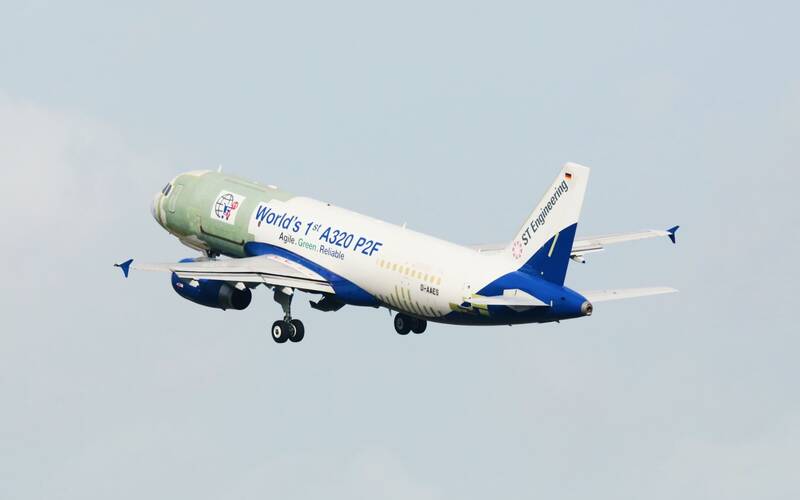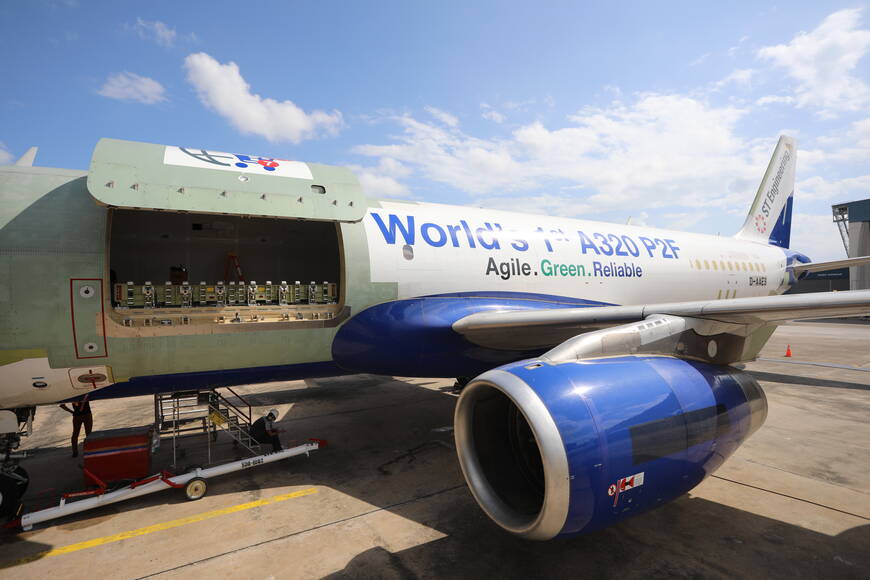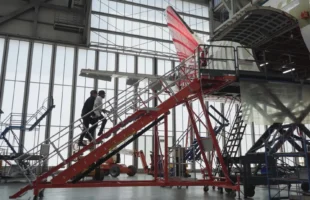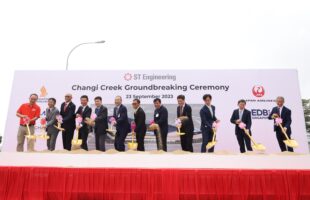

Press release (to be edited)
Elbe Flugzeugwerke (EFW), the joint venture by European manufacturer Airbus and Singapore’s ST Engineering, has succesfully operated the first flight of the A320 passenger-to-freighter aircraft, otherwise known as the A320P2F.
The flight took place on 8 December at ST Engineering’s facilities in Seletar Aerospace Park in Singapore and follows the conversion to freighter configuration, which commenced there in March this year.
The A320P2F complements EFW’s current line-up of freighter converted Airbus aircraft in service today, including the A321P2F, A330-300P2F and A330-200P2F.
Over the next few weeks, MSN2737, originally a passenger-carrying A320-200, will prepare for its ‘new life’ by undergoing a series of flight-tests which will culminate in the issuance to EFW by EASA of the aircraft’s Supplemental-Type-Certificate (STC).
It will subsequently be leased by ST Engineering Aerospace Resources (STEAR), the aviation leasing arm of ST Engineering, to Vaayu Group. Its re-entry into service as a freighter is scheduled to commence in 2022. Vaayu revealed last month that it will lease five of the narrowbody freighter type from STEAR.
The A320P2F, with a cargo capacity of 10 ULD containers + one pallet position on the main deck and seven ULD containers on the lower deck, offers 21 tonnes of payload over 1.800nm and up to 2.560nm with 17 tonnes, making it the ideal general freight and express markets, EFW noted. Aside from more payload and containerised volume than its closest competitor, the narrowbody jet has the lowest fuel burn in its class.
 EFW outlined the notable features of the A320P2F conversion as follows
EFW outlined the notable features of the A320P2F conversion as follows
- a main-deck cargo door in the forward fuselage on the left side, hydraulically actuated and electrically locked and measuring 142” width and 85” height
- a 9G rigid cargo barrier with a lightweight and durable design for optimal usage of available space
- a light-weight cargo lining
- a manually operated cargo loading system with full support of industry standard narrowbody ULDs
- reinforced floor panels & floor grid to cater for higher running loads
- a industry compliant Class-E cargo compartment









